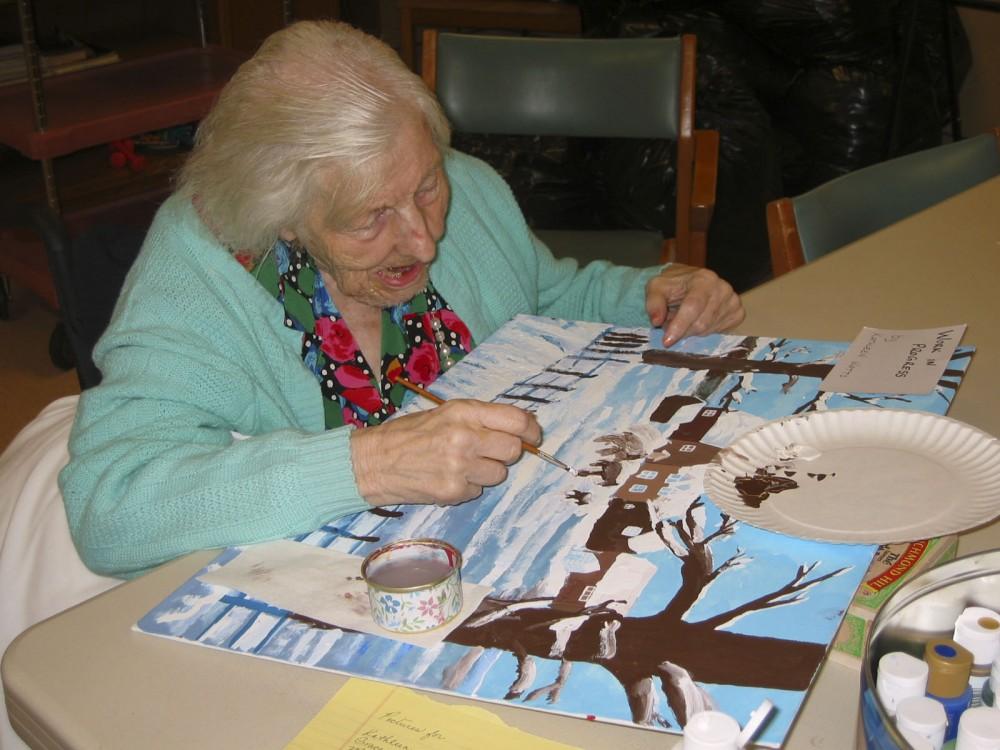Soothing sculptures

Courtesy Photo / nantralodge.bc.ca A dementia patient uses art therapy to help cope. Art therapy allows for non verbal expression of emotions
Oct 3, 2010
Art therapist Hain Crown said she paints with music because she finds it soothing. As she works silently on a piece of art, she becomes so involved that the worry and stress of life’s issues fades.
Art therapy uses various media such as sculpture, painting, drawing, role-playing, music, writing and acting as expressions of self. Art therapy can be found almost anywhere – hospitals, mental health centers, nursing homes, homeless shelters and Grand Valley State University.
The Counseling Center offers an Art Therapy Group from 3:30 p.m. to 5 p.m. Wednesdays.
Students are asked to commit to a minimum of five sessions.
Entry into the Art Therapy Group requires referral from a counselor.
“Art therapy is a mental health profession that uses the creative process of art making to improve and enhance the physical, mental and emotional well-being of individuals of all ages,” according to the American Art Therapy Association’s website.
Although useful for anyone, art therapy can especially help those with stress, anxiety, depression, trauma, substance abuse and other psychological obstacles.
Kate Hinkle, counselor and coordinator of the Art Therapy Group, said people undergo art therapy for the same reasons they try talk therapy.
“They can express themselves in a way that is not verbal,” Hinkle said. “It is a different way of processing things – visually and physically expressing emotions.”
Through a completed piece of art or through an artistic performance, Hinkle said those in art therapy feel a shared experience. They can connect with other members of the group.
“It’s a way to think about things, but a way to do it in a fun, light-hearted way,” she said.
Crown said some people find it more relaxing to put things that bring about stress onto paper.
“Some people like to work from colors that are relaxing to them,” she added.
The British Association of Art Therapists posted client comments in agreement with Hinkle and Crown.
“I learnt to face my feelings and my thoughts on paper in disarray just like my mind,” said one client. “I also found that it became a mirror image of my feelings. It has helped me face reality.”
GVSU students have had similar experiences in the campus Art Therapy Group.
Since the Counseling Center began offering the Art Therapy Group, six to eight students have participated each week.
Each art therapy session runs about 90 minutes with the period broken into several segments.
After students check in and chat for a few minutes, a moderator from the Counseling Center opens a warm-up activity. These exercises include drawing with the non-dominant hand, drawing with the eyes closed and sketching to different kinds of music. A short reflection follows the activity.
For main activities in the past, students have made masks, created group murals, formed collages and molded sculptures.
The 1.5-hour session concludes with a time to process the main activity. Group members comment on the art pieces, discovering trends and discussing how certain colors and shapes can represent different emotions.





















